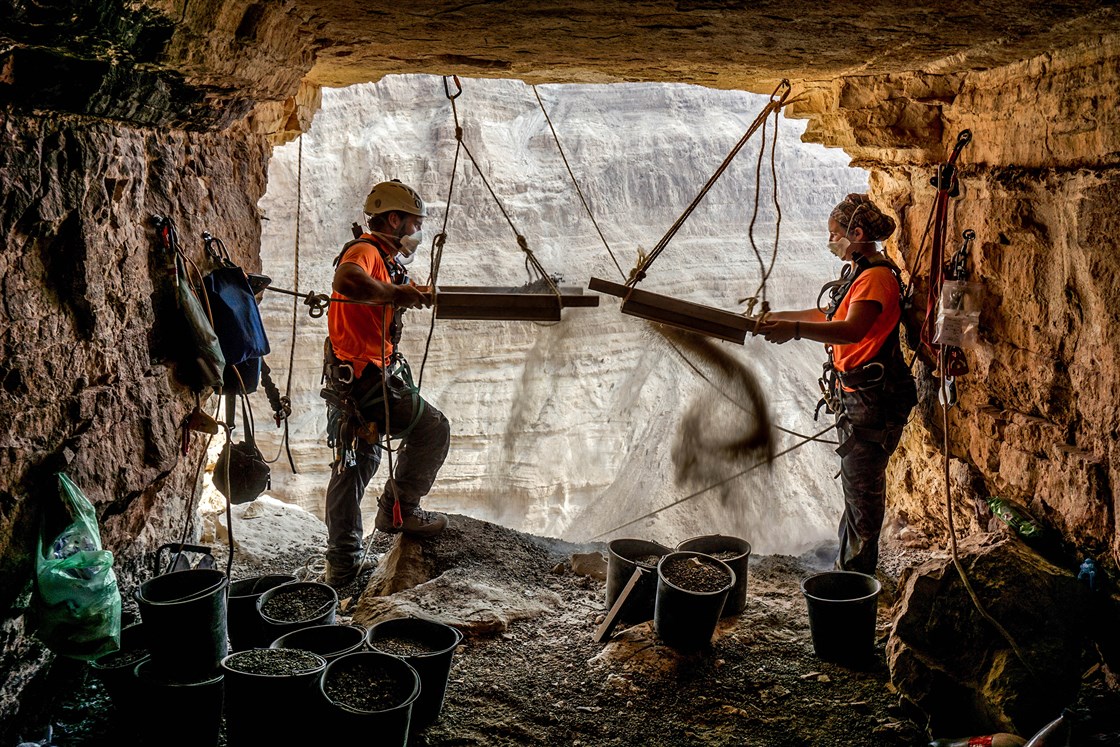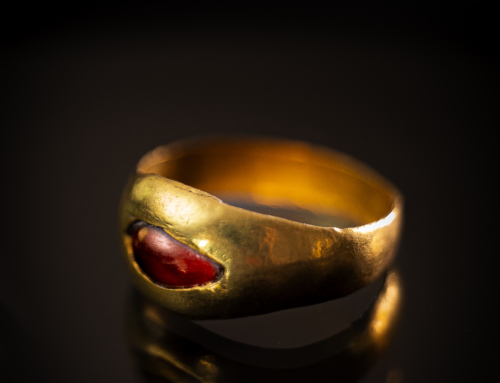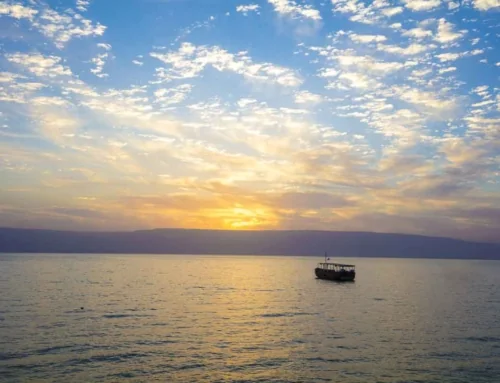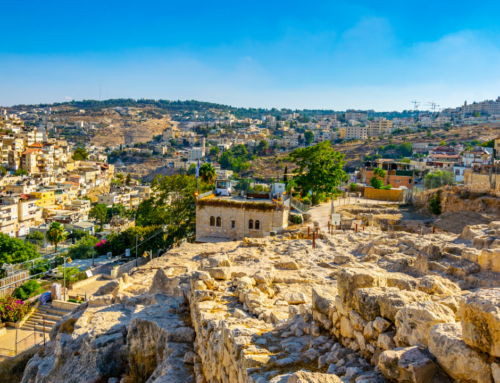Arguably one of the most significant archeological finds of history, if not THE most significant archeological find is without question the Dead Sea Scrolls found in the caves of Qumrun which is in the Judean Dessert, located around the Dead Sea. For years now, excavations have taken place in the area and have divulged many new finds such as the community which wrote and hid the scrolls during the revolt. These scrolls have fascinated people for seventy years, but no more scrolls have been located, until now; The New Dead Sea Scrolls.
The new Dead Sea Scrolls have been located in a cave that is known as the “Cave of Horrors” due to the insanely difficult process of getting into these caves, with includes repelling down a steep cliffside to get into the cave. Drones and other high-tech tools were used to aid the investigation into the difficult areas, The new Dead Sea Sea Scrolls are fragments of the books of Nahum and Zechariah and are written in Greek, with only “God” written in Hebrew on them.
Around 80 fragments were found as part of the new Dead Sea Scrolls and notably had small variations, which had never been seen prior, though the variations are very minimal.
Verses found include (as found on scroll) Nahum 1:5-6:
“The mountains quake because of Him, And the hills melt. The earth heaves before Him, The world and all that dwell therein. Who can stand before His wrath? Who can resist His fury? His anger pours out like fire, and rocks are shattered because of Him.”
and Zechariah 8:16-17:
“These are the things you are to do: Speak the truth to each other, and render true and sound judgment in your courts; do not plot evil against each other, and do not love to swear falsely. I hate all this,” declares the Lord.”
In addition to the new Dead Sea Scroll fragments, they also found many other amazing discoveries, including the oldest intact basket ever found in the world, dating back over 10,000 years. This would put the basket six-thousand years before Abraham according to scientists.
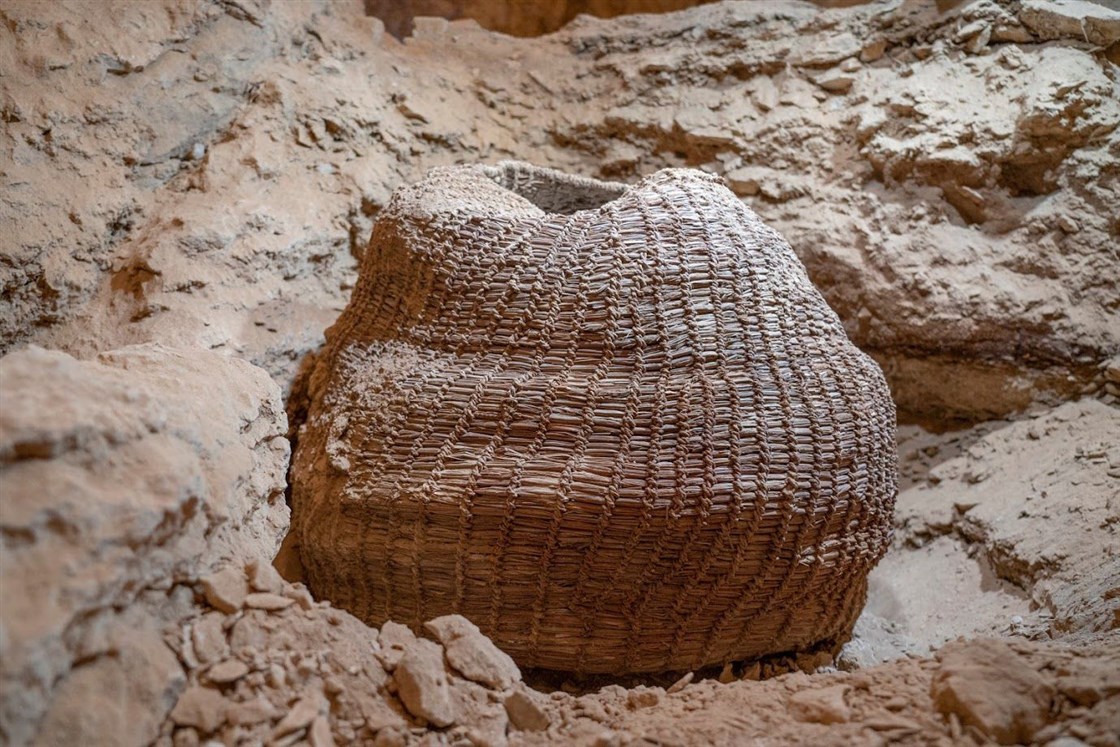
Yaniv Berman / Israel Antiquities Authority
They also found a young mummified child, between the ages of 6-12, lovingly laid in a blanket for burial. This mummy is thought to date back six-thousand years according to scientists.
To round out the trove of discoveries are many coins, arrows, pots etc with the new Dead Sea Scrolls.
The original Dead Sea Scrolls were found in 1947 by Bedouin shepherd boys. They threw a rock inside a cave and heard pots break before going back and investigating and then letting researchers know. The caves were excavated between 1947-1956, when they found manuscripts written between 300BC and 100AD. This included a complete copy of the book of Isaiah, which helps to validate today’s translation and possibly historicity.
During their digs and research, researchers believed that these scrolls were written by a very strict Jewish sect who referred to themselves as Essenes. Others refute this and think it was just fleeing random Jews from Jerusalem during the revolt of 70AD. Still others think possibly these writings were the works of some of the earliest Christians.
The preservation of the scrolls as well as the other found artifacts is based around the very unique environment of the Dead Sea area that isn’t replicated anywhere else on earth. Include in this the darkness of the caves and the clay vessels many of the scrolls were kept in, as well as the material the scrolls were made of, it created a perfect scenario for preservation over thousands of years. Now removed from the caves, historians, scientists and the Israeli government have taken great efforts to replicate the environment at the Shrine of the Book in Jerusalem. They work to keep the scrolls in tact and preserved, making sure that air quality, lighting and exposure do not deteriorate the scrolls at an accelerated rate out of the caves. While the scrolls are on display, they are rotated in and out so no fragments are over exposed to damaging forces.
Around 600 caves have been excavated over the last 60 years, with decades where no digs in the area were done. Only in the last few years has research in the area restarted on what is seen as a “rescue mission” to save artifacts from looters and destruction. It is believed this may be just the beginning of new discoveries of scriptures and other historically significant and possibly changing discoveries. There are at least 300 caves left to investigate.
Touring Qumran is a popular stop on most tours, as it had such an impact on the credibility of the Bible and is close to other popular sites such as the Dead Sea, Masada and Ein Gedi. There is no doubt that the new Dead Sea Scroll findings will continue to spur interest in the area for both foreign and domestic travelers to the area as well as scholars.
Plan your journey to the Holy Land and include a stop to see the latest findings of an active dig site at Qumran with the new Dead Sea Scrolls today by contacting our helpful Tour Operators! There is no obligation and no risk with no money down until 120 days prior to your tour*!
*Some exclusions may apply, including airfare which is not included. Check with your Tour Operator for more details.

